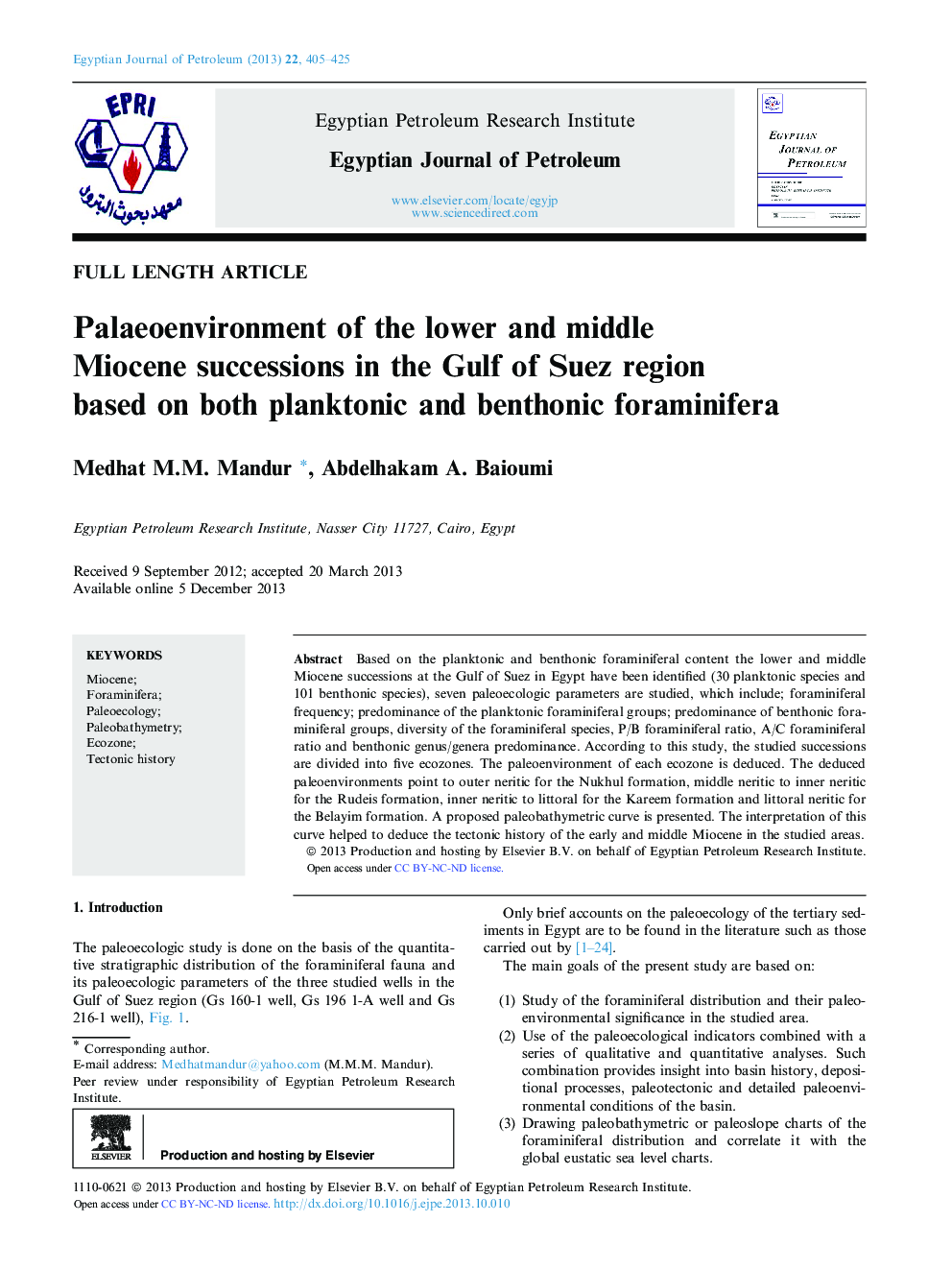| Article ID | Journal | Published Year | Pages | File Type |
|---|---|---|---|---|
| 1756934 | Egyptian Journal of Petroleum | 2013 | 21 Pages |
Based on the planktonic and benthonic foraminiferal content the lower and middle Miocene successions at the Gulf of Suez in Egypt have been identified (30 planktonic species and 101 benthonic species), seven paleoecologic parameters are studied, which include; foraminiferal frequency; predominance of the planktonic foraminiferal groups; predominance of benthonic foraminiferal groups, diversity of the foraminiferal species, P/B foraminiferal ratio, A/C foraminiferal ratio and benthonic genus/genera predominance. According to this study, the studied successions are divided into five ecozones. The paleoenvironment of each ecozone is deduced. The deduced paleoenvironments point to outer neritic for the Nukhul formation, middle neritic to inner neritic for the Rudeis formation, inner neritic to littoral for the Kareem formation and littoral neritic for the Belayim formation. A proposed paleobathymetric curve is presented. The interpretation of this curve helped to deduce the tectonic history of the early and middle Miocene in the studied areas.
